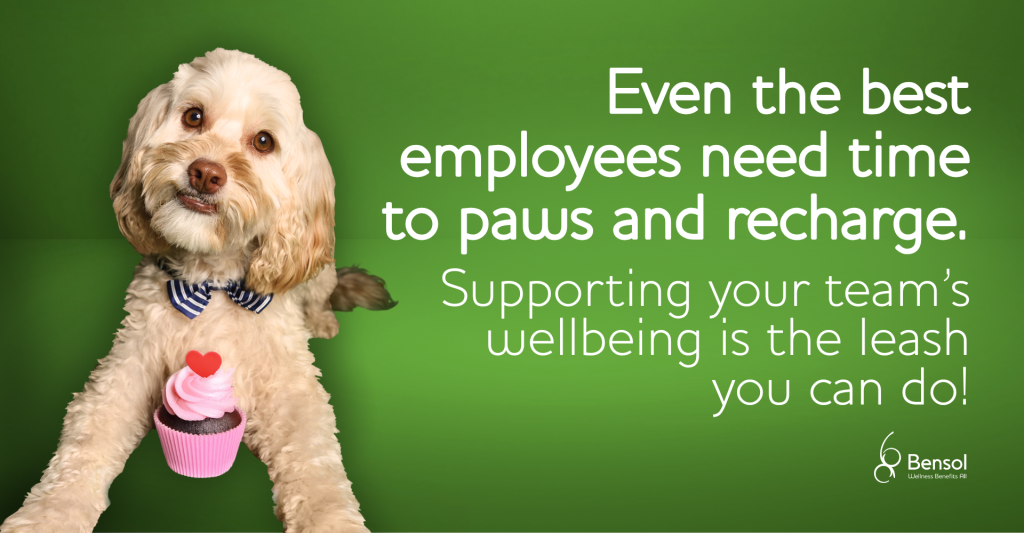Show Your Pack Some Love: Fighting Burnout with Better Benefits

Burnout is no longer just a buzzword. It’s one of the biggest challenges facing workplaces today, and it’s costing employers more than they realize. When people are mentally checked out, productivity drops, mistakes rise, and the best employees quietly start looking elsewhere. But the solution isn’t just about telling people to take a day off; it’s about creating an environment that genuinely supports mental health, and that’s where thoughtful benefits make a difference.
The last few years have changed how we think about work. Boundaries have blurred, teams are stretched thin, and the line between being dedicated and being drained has never been thinner. Burnout shows up in subtle ways: the once-eager employee who now avoids meetings, the reliable one suddenly missing deadlines, the group chat that’s gone quiet. These are signs that people aren’t just tired, they’re running on empty.
Employers have a real opportunity here. Supporting mental health doesn’t just prevent burnout; it builds loyalty, trust, and better performance. When staff know they’re supported, they’re more likely to bring their best selves to work, and to stay. That support starts with more than a poster about wellness. It starts with the tools employees will actually use, like their benefits plan.
The Chambers Plan is designed with small and mid-sized businesses in mind, which means it gives employers access to big-company benefits without the big-company cost. But what’s often overlooked is how its features can directly help prevent burnout and support mental health.
Through virtual care, employees can talk to a doctor or counsellor from home instead of waiting weeks for an appointment. The Employee Assistance Program connects people to short-term counselling and professional support when life gets heavy, whether it’s stress, anxiety, or financial pressure. Legal and HR assistance also help reduce some of the behind-the-scenes tension that adds to workplace strain.
Even more importantly, the Chambers Plan makes benefits stable and sustainable. Because it’s part of a pooled structure shared by thousands of businesses, premiums don’t skyrocket after a single claim. That means employers can keep coverage consistent year after year instead of cutting back when budgets tighten, something that’s key to building long-term trust with staff.
Still, benefits alone can’t fix burnout. They work best when paired with a healthy workplace culture. Employers can take small but meaningful steps to build a supportive work environment, like encouraging people to actually use their vacation days, making workload discussions part of regular check-ins, or introducing flexible schedules where possible.
Encourage health boundaries instead of rewarding them for overworking, nd keep talking about mental health in an open, non-judgmental way, because silence is often what keeps people from getting help.
The conversation around burnout doesn’t have to feel heavy or hopeless. It’s really about shifting from reaction to prevention, from crisis management to everyday care. When a company invests in its people’s wellbeing, everyone wins. Employees feel seen and supported, teams work better together, and business owners can focus on growth instead of constant turnover.
The world of work has changed, but the core truth hasn’t: people do their best when they feel cared for. The Chambers Plan helps employers make that possible, not through flashy perks, but through practical, reliable coverage that protects both physical and mental health. Because in the end, the best investment any business can make is in the people who keep it running.

